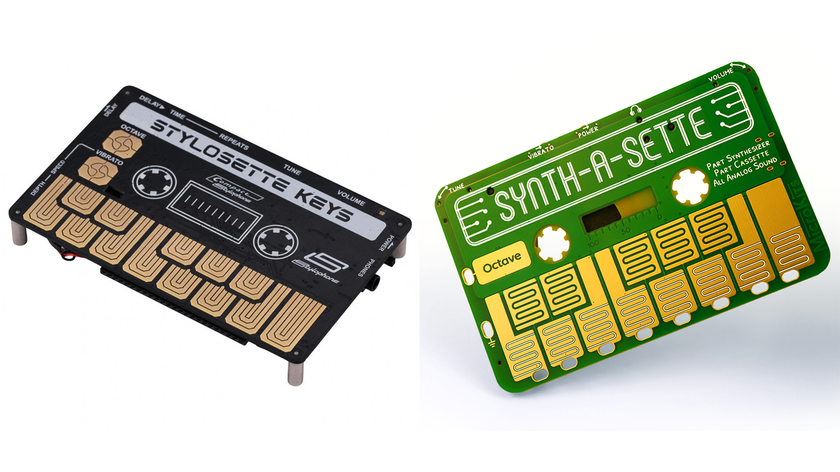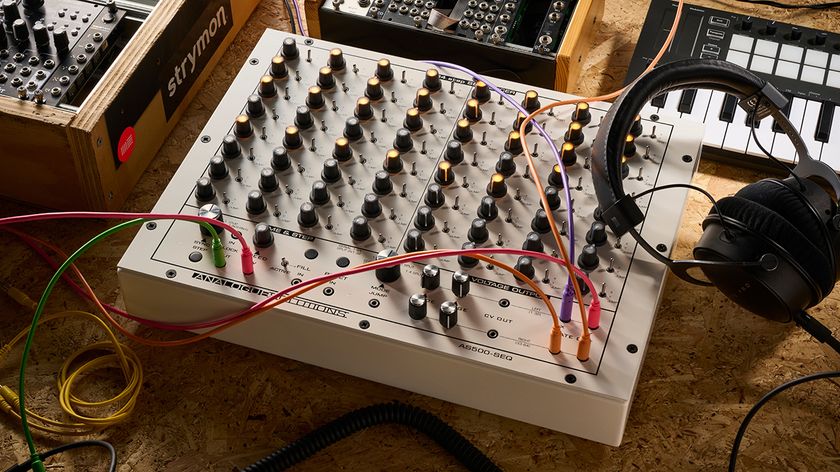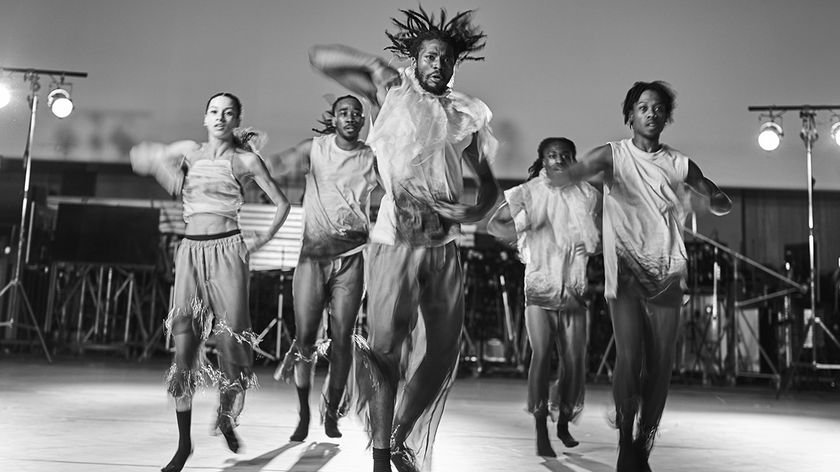Tascam DP-32 is "best Portastudio ever"
Hardware recorder offers 32 tracks, SD card storage and a colour LCD display

Tascam DP-32

Tascam DP-32

Tascam DP-32
Not everyone likes recording their music on a computer and, for those who don't, Tascam's Portastudio range has always been a source of security. It continues to endure - in fact, Tascam is describing its new DP-32 Digital Portastudio as its best model yet.
This, remarkably enough, is a 32-track recorder that enables you to record up to eight tracks simultaneously. There are XLR and 1/4-inch combo jacks, while recordings are stored on SD/SDHC memory cards.
There's also a colour LCD display, input processing, a multi-effects bank and a CD-RW drive for burning discs.
The Tascam DP-32 Digital Portastudio will be available in mid-December at a projected price of £739.
Tascam DP-32 Digital Portastudio press release
TASCAM, the brand synonymous with professional recording products, today introduced DP-32 - a 32 track Digital Portastudio with solid-state recording, a colour LCD display and channel strip controls to make recordings simple and easy so that the user can remain creative. With its great sound, powerful features and easy operation, the DP-32 is TASCAM's best Portastudio yet and will be available in the UK from Mid December with a tentative SRP of £739.00.
Ideal for either individuals or bands, up to eight tracks can be recorded at a time through its combination XLR and ¼" combo jacks on a standard SD/SDHC memory card. Input processing like compression and limiting, an internal send effect with reverb, delay and chorus, guitar amp simulation and multi-effects for use with the instrument-level input as well as an external effects send are available during recording.
For mixdown, the DP-32 offers 20 channel faders and 12 rotary controls for EQ, Pan and effects including reverb and chorus. During the mastering process, the material can be further optimised with EQ, compression and normalisation. Once finished, songs can be written to CD with the built-in CD-RW drive or transferred to computer over USB to publish the songs on the Internet, for example.
Get the MusicRadar Newsletter
Want all the hottest music and gear news, reviews, deals, features and more, direct to your inbox? Sign up here.
Tascam DP-32 features
- 32-track digital Portastudio
- 8 mono tracks, 12 stereo tracks (can also be used as mono tracks)
- Record up to 8 tracks at once with 44.1/48 kHz and 16/24-bit audio resolution
- Simultaneous playback of all 32 tracks
- Virtual tracks for alternate takes and undo
- Dedicated stereo master track - Colour LC display and 12-encoder channel strip for simple operation
- Built-in 40-channel mixer
- Mix down your 32 playback tracks with eight input signals to the dedicated stereo master track
- Use the Bounce function to set tracks free by mixing multiple tracks to a single mono or stereo track - Dedicated controls for EQ, pan and effect sends
- Solid-state recording to SD Card media for better shock resistance and reliability compared to hard drive recording
- 8 balanced microphone inputs on balanced combo XLR/jack connectors
- Switchable phantom power for 4 channels each
- One input switchable to instrument level for direct recording of a guitar or bass
- Unbalanced stereo output (RCA jacks)
- Balanced stereo monitor output (6.3-mm TRS jacks)
- Two unbalanced effect sends (6.3-mm TS jacks)
- Stereo headphones output (6.3-mm TRS jack)
- MIDI input and output for MMC, Control Change and MTC output
- Footswitch input (2.5-mm mini jack) for Tascam RC-3F (optional accessory)
- Input effects (Limiter, Compressor, Noise suppressor, Exciter)
- Guitar effects (Amp simulator, Reverb, Compressor, Chorus, Flanger, Phase shifter)
- Mixdown effects (Reverb, Delay, Stereo chorus)
- Mastering effect (Single/Multi-band stereo compressor, EQ, Noise shaping)
- Mark function (up to 99 location marks)
- Built-in chromatic tuner and metronome
- CD-RW drive for audio CD creation as well as file import and export
- USB 2.0 port for data backup/restore and file transfer with a computer

I’m the Deputy Editor of MusicRadar, having worked on the site since its launch in 2007. I previously spent eight years working on our sister magazine, Computer Music. I’ve been playing the piano, gigging in bands and failing to finish tracks at home for more than 30 years, 24 of which I’ve also spent writing about music and the ever-changing technology used to make it.












